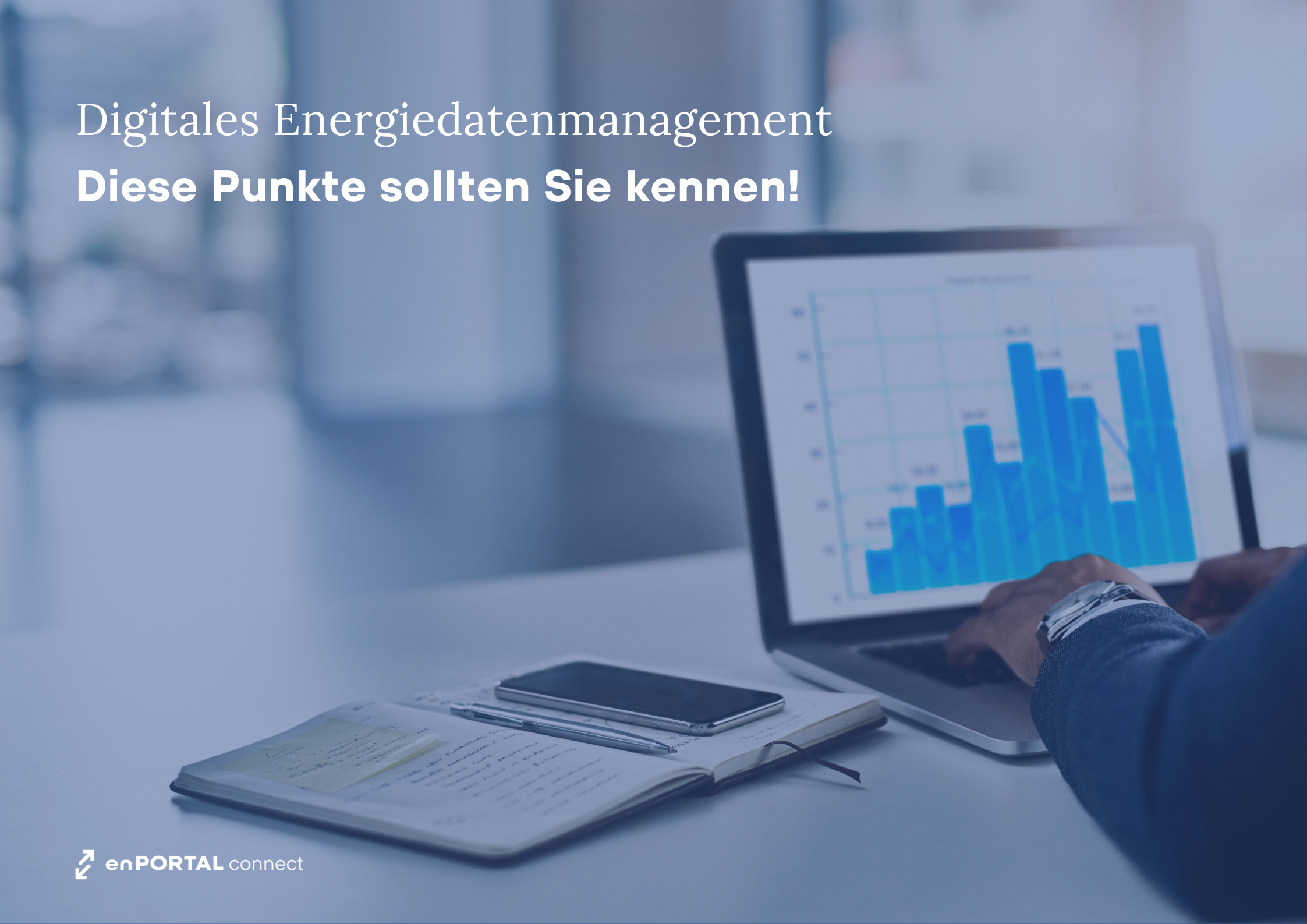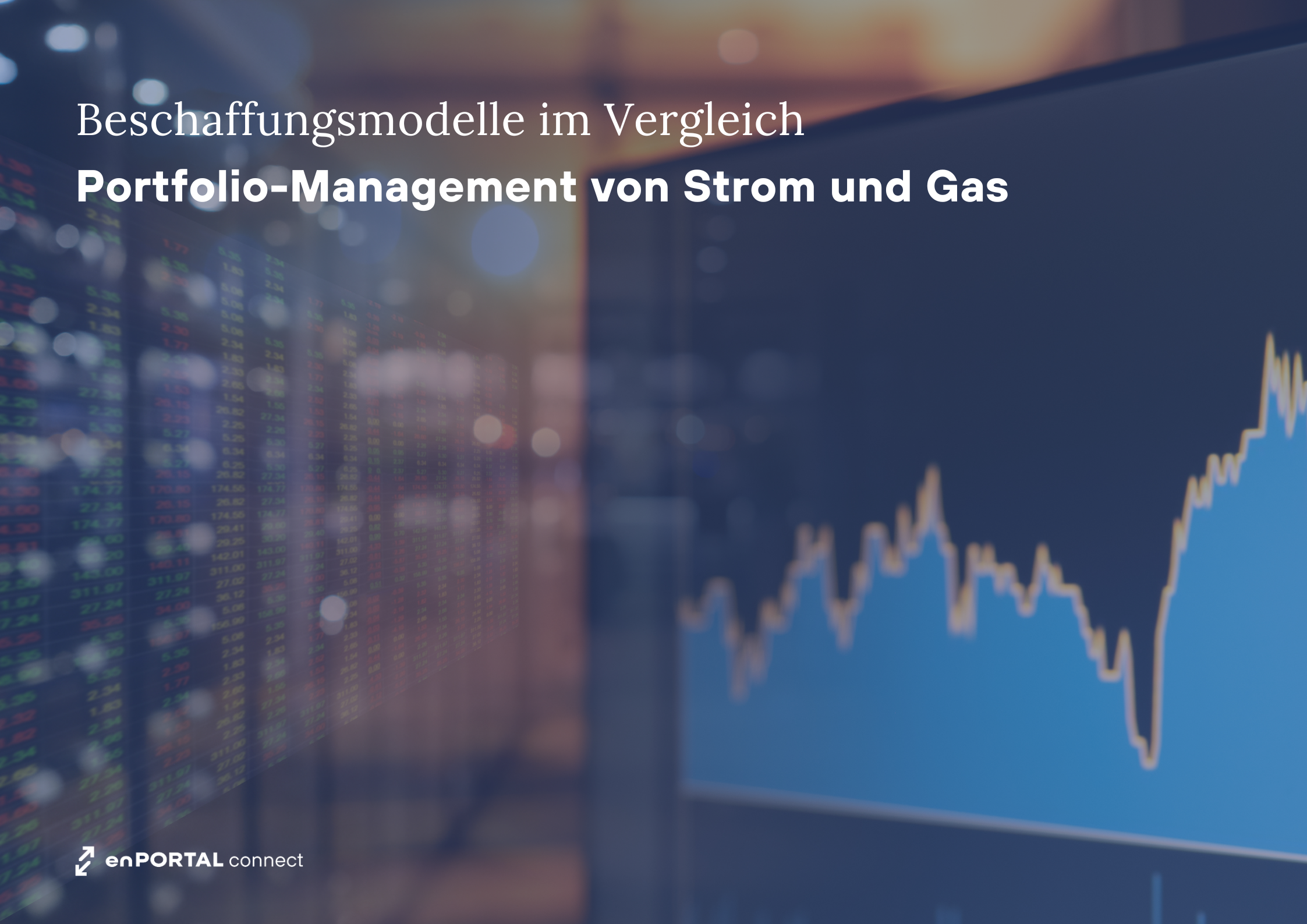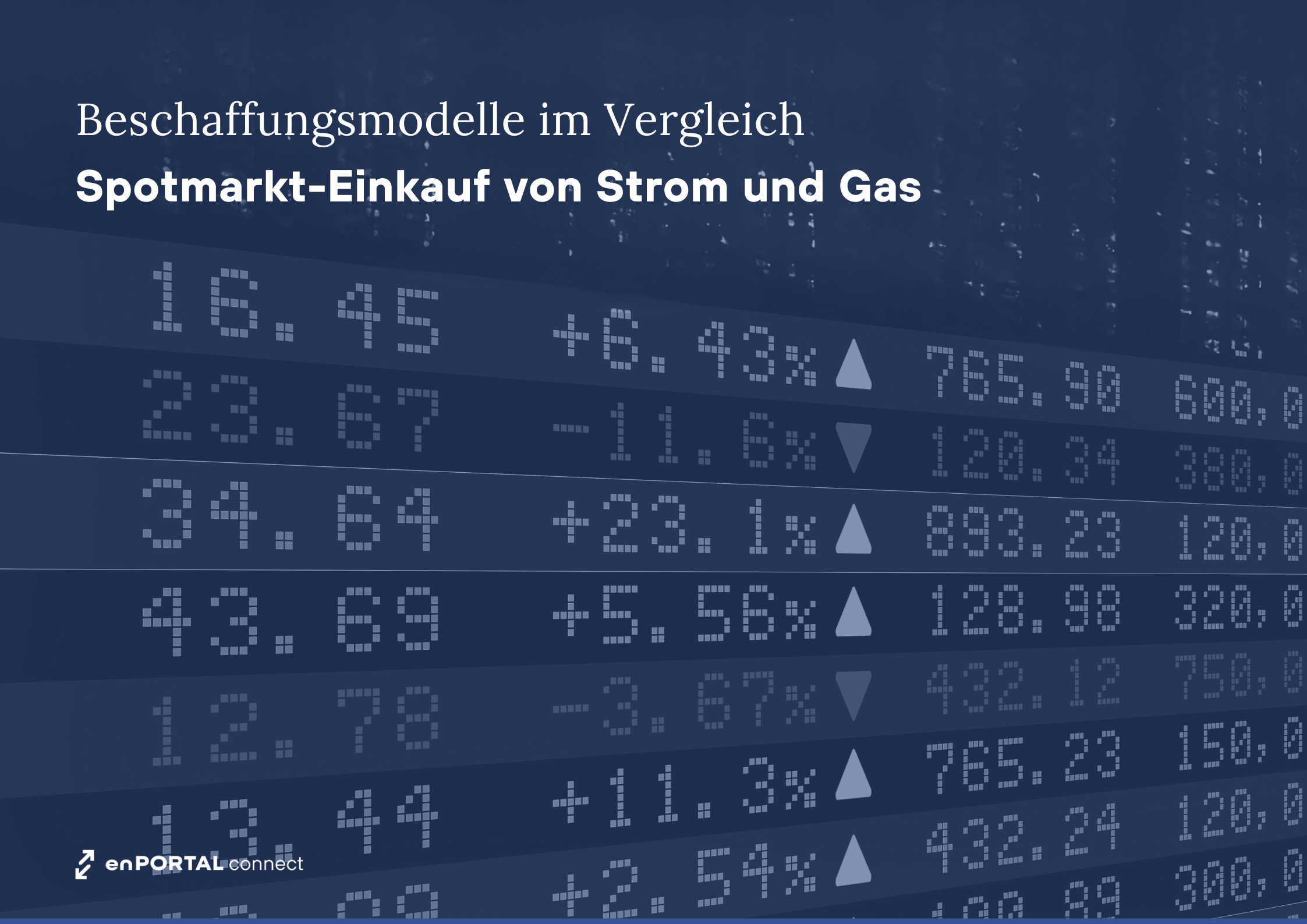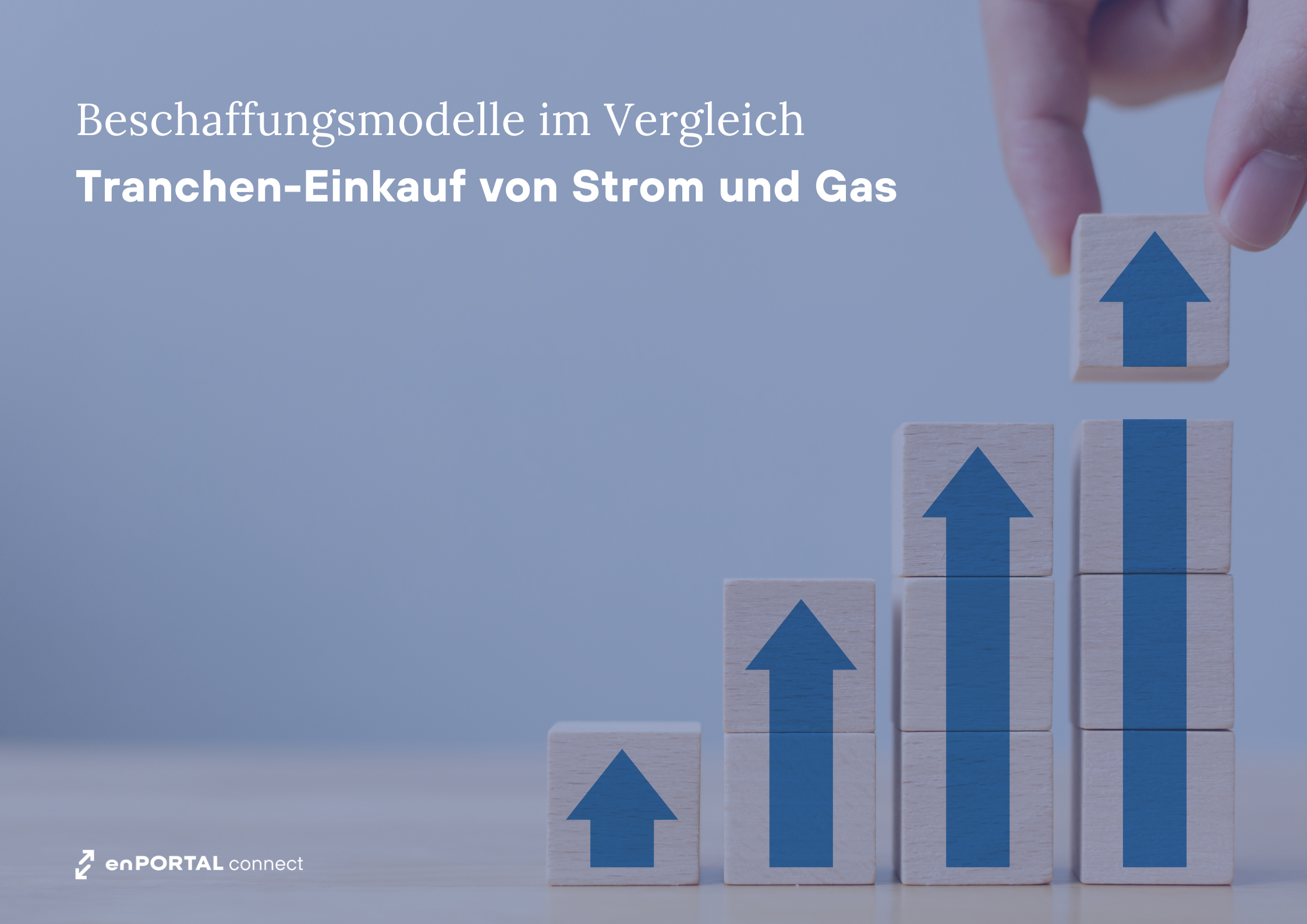Today's article is about digital energy data management. What exactly does this mean and what data can actually be managed here? We explore this question in detail - plus: we explain the role that digital links play. We will provide you with the status quo and the current possibilities on the market and show you what role digital processes and automation play. By the end of the article, you will know exactly what digital energy data management means and how you, as an energy manager, can get the best out of it for yourself and your company.
Definition: Digital energy data management
Before we go into the depths of the topic, we will first illustrate some basic requirements for energy knowledge and definitions. Energy data management is the management and analysis of all energy consumption data of a company, i.e. energy, electricity or gas consumption. This includes the visualisation and control of consumption points, consumption, costs and contracts. It also involves linking a company's energy data with current, publicly regulated grid charges, taxes, levies and surcharges.
What are the benefits of digital energy data management?
Good energy data management is a prerequisite for optimising energy procurement and reducing costs. Offline or with Excel spreadsheets, this is associated with a high level of error-prone effort and countless hours of work, as grid fees, taxes, levies and charges are constantly changing in addition to consumption.
So much for the general framework. Now let's move on to the specific content. What data can be managed in digital energy data management and what advantages does this offer energy buyers? How is this data connected and which sorting/arrangement brings the greatest benefits? We will also show you the latest possibilities for digital linking, which will have a significant impact on the working lives of energy buyers.
First things first: Digital energy data management traditionally involves the following parameters: consumption points, consumption, costs and contracts. These are directly interrelated, but each is important and interesting for energy buyers in its own way.
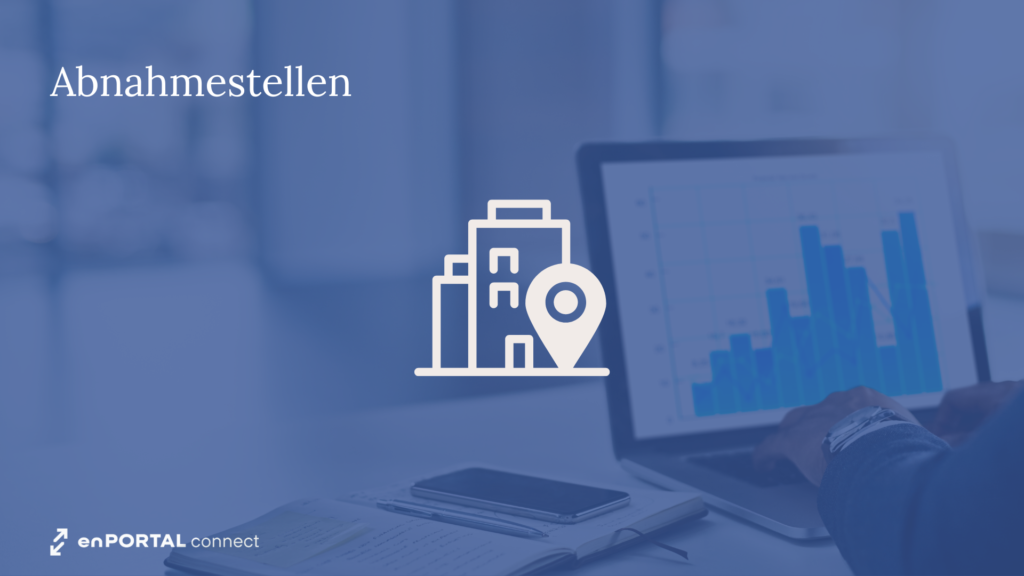
Point 1: Focus on points of sale
On the one hand, digital energy data management is about a company's "consumption points". A consumption point is a building or office of the company or a location that consumes electricity or gas, where the energy consumption per year is measured. Every company has different locations and numbers of consumption points.
The consumption values of a consumption point end up in a load profile. The load profile or load curve is the chronological progression of the power consumed. Electricity is measured on a quarter-hourly basis, gas typically on an hourly basis. RLM meters (also known as load profile meters or, more rarely, smart meters) are used for measurement, which transmit the measured data to the grid operator once a day. Let's be clear: each consumption point has its own load profile with these many individual values. If a company has 3 production halls and an office, for example, it is quite easy to visualise the small company structure with four consumption points manually via Excel - but it is also tedious to update the values every month. Nowadays, this can be done automatically ((We have already mentioned the advantages of this in an earlier article, see: XXX))
However, if chain stores, cinema operators or groups with many consumption points/locations (a classic example is a clinic group with numerous hospitals in Germany) want to manage all their consumption points and their consumption, they cannot avoid a management system. This is then part of digital energy data management, where all these consumption points are bundled and clustered. Many still store the energy consumption data of the consumption point in rigid Excel spreadsheets, but nowadays there are digital energy platforms such as enPORTAL connect, which provide a digital overview of all consumption points.
The presentation of purchase points is important for energy purchasers because new energy supply contracts have to be concluded for these purchase points on an ongoing basis. Usually once a year - then we speak of fixed-price procurement. Or several times during the year, in which case we speak of tranche purchasing.
What is the advantage of correctly recording all the energy data of a consumption point in the context of tenders for electricity and gas? Well, if I have all of my supply points and their consumption values bundled, complete and up-to-date, then I can decide quickly and at any time whether I want to launch a tender for all locations at the same time or just for a certain part - I can bundle or cluster my supply points, depending on how the energy supply contracts are organised. It also allows the company to know exactly how much energy is being consumed by which of its supply points. This creates clarity, security and control.
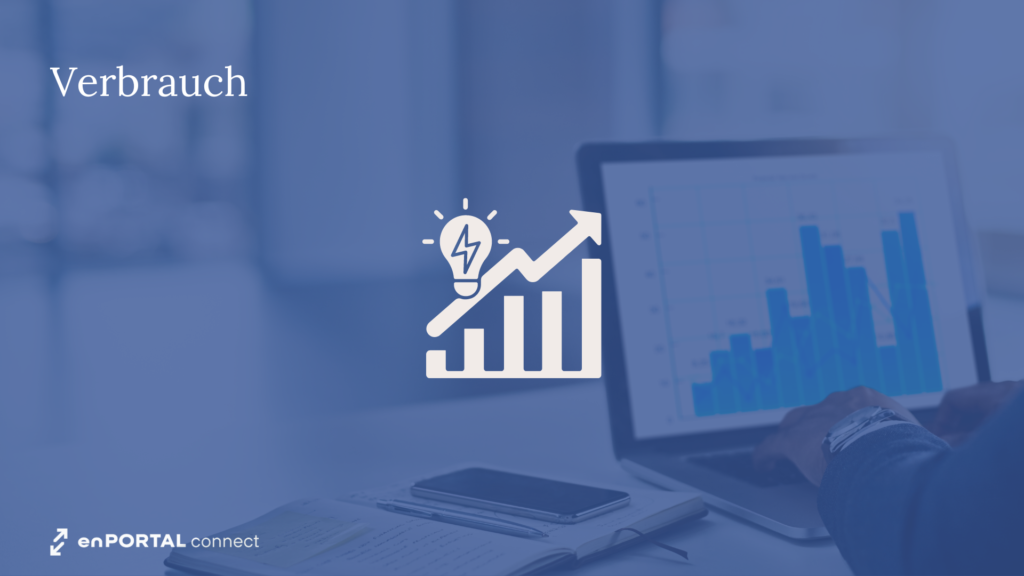
Point 2: Focus on electricity and gas consumption
With digital energy data management, the focus can also be clearly placed on the company's consumption, i.e. on what the individual consumption points consume. The focus here is less on the company structure and more on the company's overall energy consumption. By displaying consumption, it quickly becomes clear how much electricity or gas each location or point of purchase consumes per year - this allows for benchmarking and indicates potential for optimisation. If, for example, one location with the same conditions (e.g. an office) consumes more than another, this analysis of consumption will make it clear that it is worth taking a closer look at energy management. Plus: the responsible technical managers can look for the cause and make optimisations if necessary, e.g. new light sources etc. At the same time, consumption from a historical perspective shows what the company basically needs and allows conclusions to be drawn about possible changes to the company, such as in-house generation systems or photovoltaic systems.
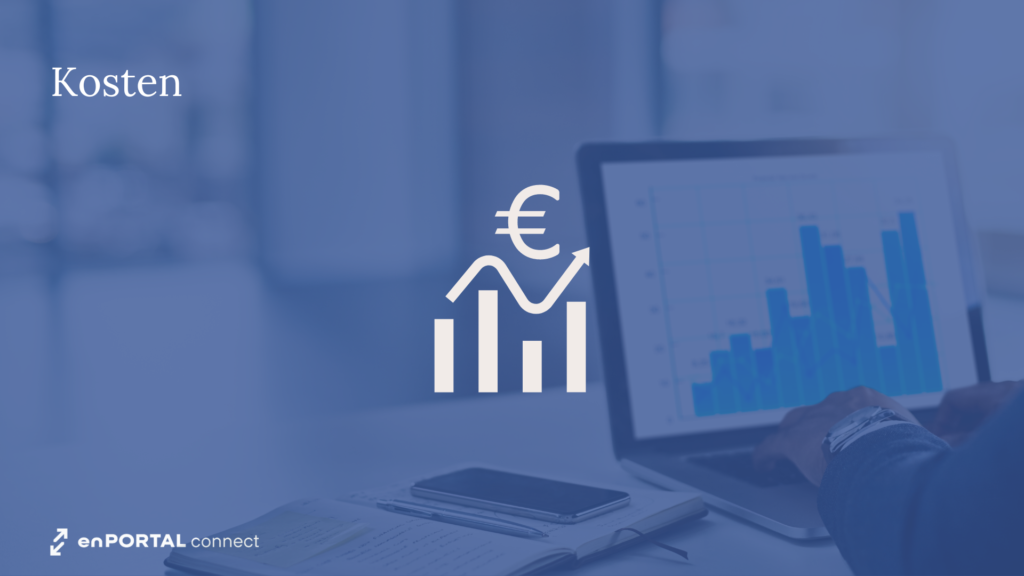
Point 3: Costs for electricity and gas
In digital energy data management, another area of observation is the cost of electricity and gas. How much does the company pay per location? How much does the company pay for the coming delivery year? How high are the individual price components of the energy price? How high are the grid charges, taxes, levies, surcharges, etc.? These are all questions that can be answered by looking at the costs per consumption point. With the costs, the company can see at a glance what costs a consumption point incurs and how the fixed public charges, taxes and levies have changed. This also clearly shows how the pure energy prices purchased by the purchasing manager have developed. Of course, changes in the energy market (see the energy crisis and a 10-fold increase in pure energy prices in some cases) play a significant role. When looking at costs, one point that is relevant is future energy costs. Energy platforms with digital processes offer clear added value here, as they can display the forecast values for subsequent years - this is called an energy price forecast. With the help of a digital energy price forecast, it is possible to estimate what a current energy purchase would cost in terms of energy costs. This helps with the decision-making process. If you would like to know more about energy price forecasting, you are welcome to read our recently published articles from February via LinkedIn or via our website under "Press" and "Energy knowledge".
Let's be clear: energy costs are a relevant factor and are particularly important for managing directors when it comes to the future development of the company. Keeping these costs available at all times is an important task of the energy buyer.
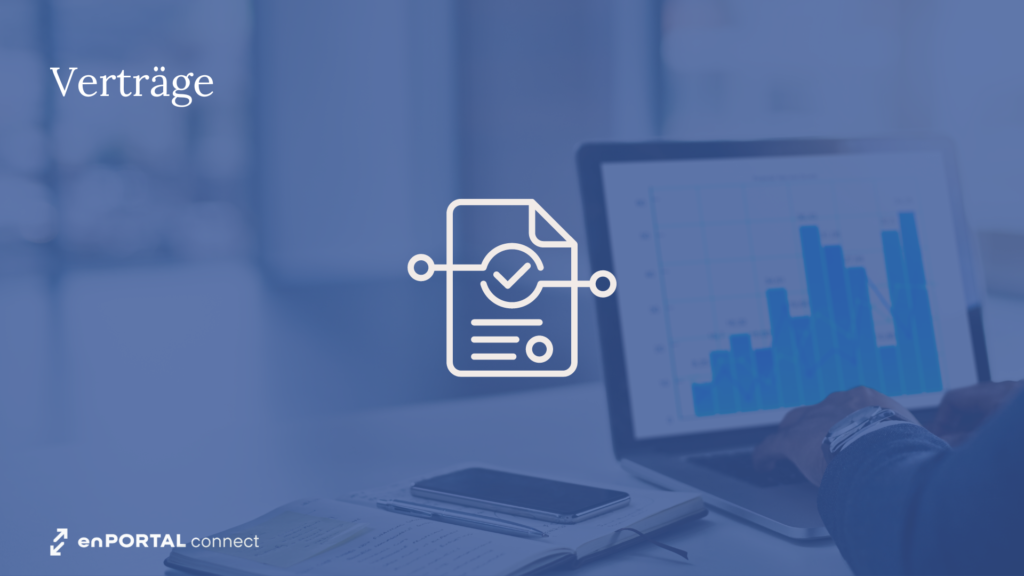
Point 4: Contracts
Another component of digital energy data management is the presentation of the energy supply contracts that the company has concluded. Precisely because all points of purchase can be listed individually and in full on energy platforms, a separate contract can be concluded for each of these points of purchase. Keeping track of this offline requires a great deal of meticulousness and care. But that no longer has to be the case: With digital IT service providers such as enPORTAL, the processes involved in tendering and concluding contracts are designed in such a way that everything from the request for quotation to the conclusion of the contract has been automated. This means that after an invitation to tender and the digital acceptance of the offer by the energy manager, the agreed supply contract automatically ends up in the "Contracts" field and can be viewed at any time. This means that no cancellation deadlines are missed and there is no need to manage data in the original filing cabinet.
Finally, let's turn briefly to the practical side - we would like to show you how digital energy data management is mapped in enPORTAL connect. Much of what we have already mentioned comes into play here.
What energy data is recorded by enPORTAL connect?
With enPORTAL connect, your consumption points are displayed with consumption, costs, grid data, charges and taxes. Numerous filter functions allow you to analyse your data. As a rule, we have created your energy data retrospectively on the energy platform for at least two years, so that you can also better understand historical changes. The longer you are a customer of ours, the more comprehensive the data basis becomes. enPORTAL connect serves as a digital filing cabinet.
This information is bundled and linked on the digital energy platform enPORTAL connect and is always up-to-date and complete. After a short onboarding process, enPORTAL connect provides you with a functional energy platform in which your energy data is automatically updated and maintained by us.
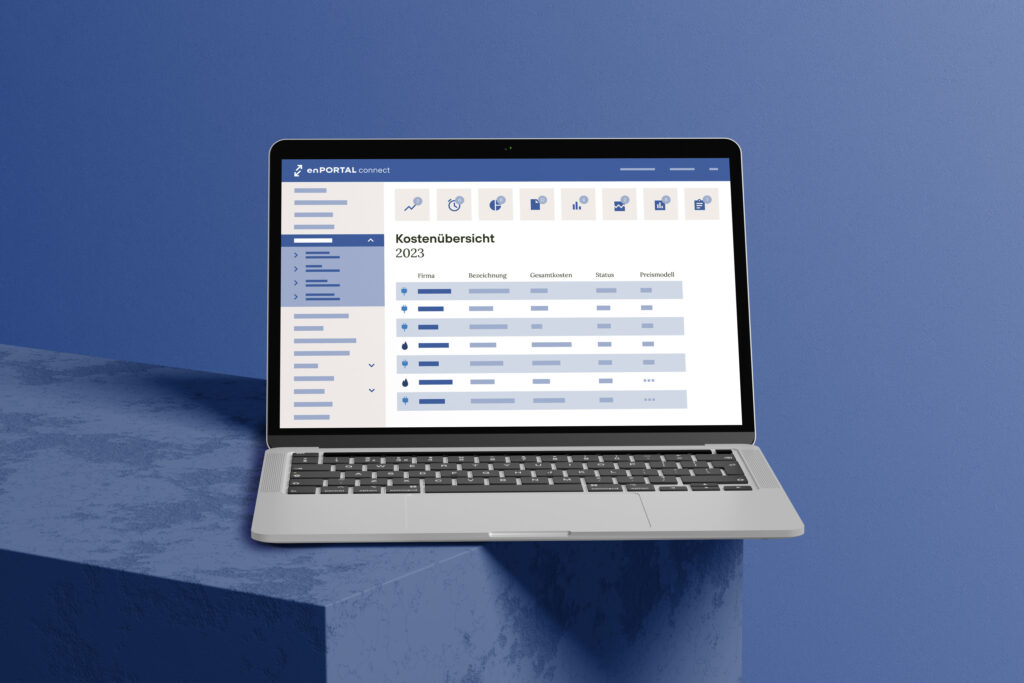
Conclusion: Digital energy data management
In this article, we have shown you which components are part of digital energy data management and what the latest possibilities are here. This will bring you up to date with what is possible and practised on the market. You have learnt how important it is to link data such as points of purchase, costs, consumption and contracts so that you as an energy buyer ultimately benefit from maximum time and labour savings, which in turn translate into a reduction in costs. With this energy knowledge, you are optimally prepared and hopefully have a clear idea of what digital energy data management means and why it is so valuable for companies.
If you have any questions or require further information, please do not hesitate to contact us.
